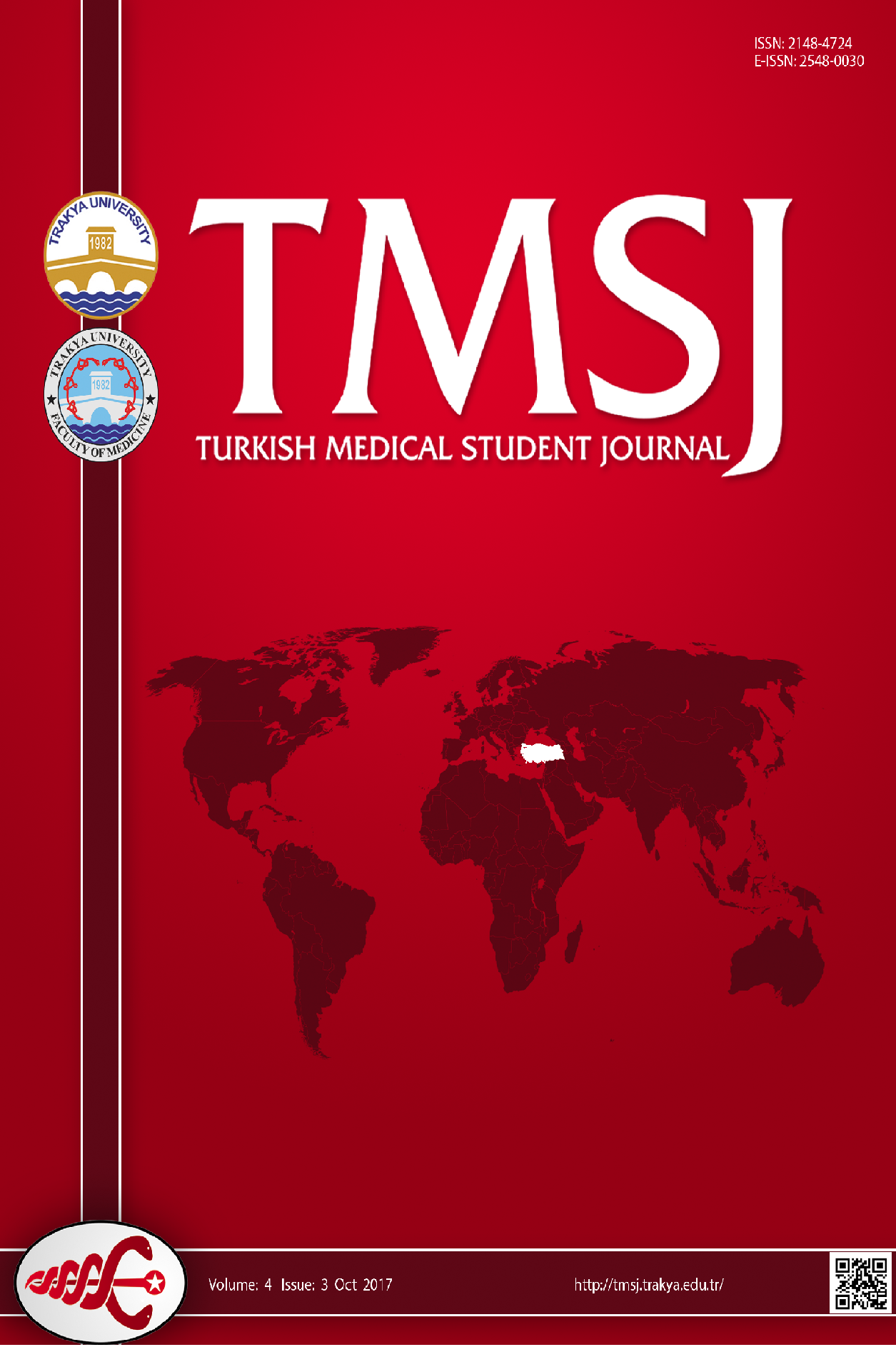
Turkish Medical Student Journal
Yazarlar: Öznur Yumurtacı, Cansu Kurt, Fatih Mehmet Uçar, Cihan Öztürk
Konular:-
Anahtar Kelimeler:Arrhythmia,Electrocardiography,Myocarditis
Özet: Aims: Acute myocarditis is an inflammatory disease of the myocardium and is characterized by a large heterogeneity of clinical presentation. Myocarditis is becoming to be recognized as a contributor to unexplained mortality, and is thought to be a major cause of sudden cardiac death in the first two decades of life. Myocardial inflammation, ion channel dysfunction, electrophysiological and structural remodelling may play important roles in life-threatening arrhythmias. We aimed to investigate the ventricular arrhythmia predictors in myocarditis patients by using electrocardiographic markers. Methods: A total of 56 patients (mean age 22.5 ± 3.7 years; 89% males) with acute myocarditis were enrolled in the study. Tpeak-Tend intervals, Tpeak-Tend/QT and Tpeak-Tend/corrected QT (QTc), cardio-electrophysiological balance (QT/QRS) and heart rate-corrected QT(QTc)/QRS ratios were calculated from 12-lead electrocardiogram. Results: Heart rate, QT and QTc values were similar between groups. QRS complexes were lower in arrhythmia positive group than arrhythmia negative group (p=0.004). Tpeak-Tend intervals, Tpeak-Tend/QT, Tpeak-Tend/ QTc, cardio-electrophysiological balance and heart rate-corrected QT(QTc)/QRS values were significantly higher in arrhythmia positive group (< 0.001, < 0.001, p=0.03, p=0.04 and < 0.001, respectively). Conclusion: In this study, we observed that higher Tpeak-Tend, Tpeak-Tend/QT, Tpeak-Tend/QTc , cardio-electrophysiological balance (ICEB) and heart rate-corrected QT(QTc)/QRS ratio are associated with ventricular arrhythmic episodes in acute myocarditis patients. These electrocardiographic markers may be beneficial to identify high risk patients for arrhytmias complicating myocarditis.